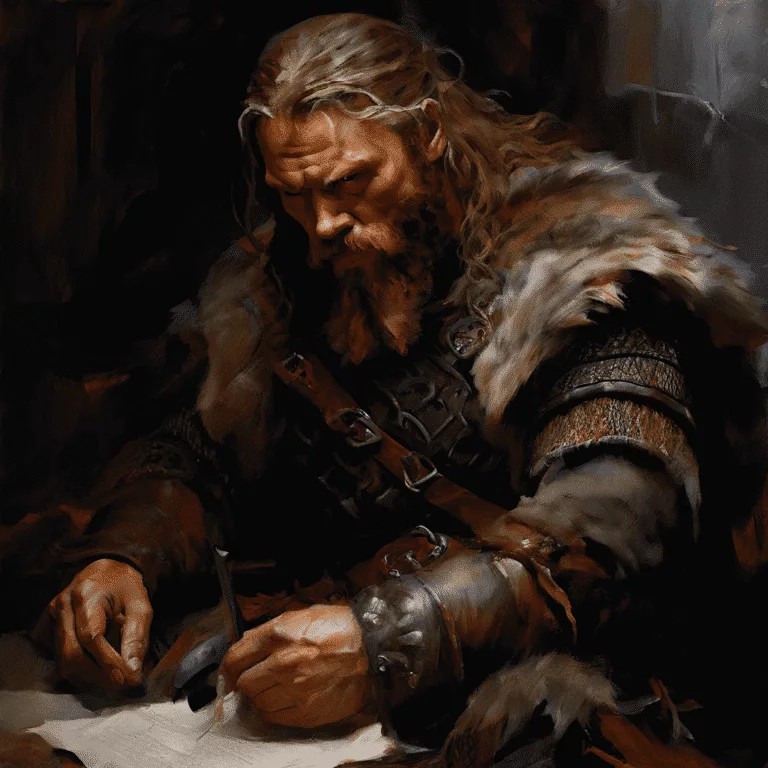Introduction
Old English literature, often referred to as Anglo-Saxon literature, encompasses the written works produced in England from the 5th century until the Norman Conquest in 1066. This period is marked by a rich tapestry of poetry and prose, reflecting the culture, values, and beliefs of the Anglo-Saxon people. Among these texts, “Beowulf” stands out as a monumental epic that continues to captivate readers and scholars alike. This post delves into the essence of Old English literature, focusing on its key characteristics, notable works, and the enduring legacy of “Beowulf.”
Table of Contents
Key Features of Anglo-Saxon Literature
Language and Style
Old English, a Germanic language, forms the foundation of this literary tradition. The texts are characterized by their use of alliteration, a rhythmic structure where the initial consonant sounds of words are repeated. Additionally, the use of kennings—compound expressions with metaphorical meanings, such as “whale-road” for the sea—adds a unique poetic flavor.
Common Themes and Motifs
The literature of this era often revolves around themes of heroism, loyalty, and the struggle between good and evil. The Anglo-Saxon worldview, shaped by both pagan and Christian influences, is evident in these works, with an emphasis on fate, bravery in battle, and the fleeting nature of life.
Notable Works and Authors of Anglo-Saxon Literature
Overview
“Beowulf” is the most renowned work of Old English literature. This epic poem, consisting of over 3,000 lines, narrates the heroic deeds of Beowulf, a warrior who battles the monstrous Grendel, Grendel’s mother, and a fearsome dragon. The poem not only showcases his bravery and strength but also explores themes of kingship, loyalty, and the inevitability of death.
Other Significant Texts and Their Authors
While “Beowulf” is the crown jewel, other significant works include “The Wanderer,” “The Seafarer,” and “The Dream of the Rood.” These poems, along with the writings of figures like Bede and Alfred the Great, contribute to the rich literary landscape of the period.
Beowulf Analysis
Plot Summary
“Beowulf” begins with the story of Hrothgar, king of the Danes, whose great hall, Heorot, is plagued by the monster Grendel. Grendel, a creature of darkness and terror, attacks Heorot nightly, killing Hrothgar’s warriors. Beowulf, a hero from Geatland, hears of Hrothgar’s plight and sails to Denmark with his men. He confronts Grendel in a fierce battle, ultimately tearing off the monster’s arm, leading to Grendel’s death.
The victory celebrations are short-lived, however, as Grendel’s mother seeks revenge. The protagonist descends into her underwater lair and slays her too. The latter part of the poem shifts to Beowulf’s later years as a wise and aged king. A dragon, angered by a stolen treasure, begins to ravage Beowulf’s kingdom. In a final act of bravery, he confronts the dragon. Though he kills the beast, he is mortally wounded and dies a hero’s death, securing his legacy.
Themes and Symbolism
The poem delves deeply into themes of heroism and the heroic code, emphasizing the importance of honor, loyalty, and reputation. The struggle between good and evil is personified in protagonist’s battles, while the presence of fate (or wyrd) underscores the inevitability of death. Symbolism is prevalent throughout the poem, enriching the narrative.
The contrast between light and dark often represents the battle between good and evil, while the depiction of monsters like Grendel and the dragon symbolize the external and internal threats faced by societies. Additionally, the treasure hoards and the great hall Heorot serve as symbols of prosperity and communal success.
Anglo-Saxon Poetry and Prose
Characteristics of Anglo-Saxon Poetry
Anglo-Saxon poetry often utilizes a strong, rhythmic structure with a caesura (a pause) in the middle of each line. This format, combined with the use of alliteration and kennings, creates a distinctive and memorable style. The themes often reflect the harsh realities of life, with a focus on exile, loss, and the search for meaning. The integration of Christian themes with traditional pagan elements further exemplifies the transitional nature of the period.
Examples and Analysis
- The Wanderer: This elegiac poem explores themes of exile and loss, with the narrator reflecting on the transience of life and the inevitability of suffering. The narrator laments his lost lord and kin, expressing profound solitude and yearning for a sense of belonging and stability. The poem transitions from despair to a contemplation of faith and the divine, ultimately offering a semblance of hope through Christian salvation.
- The Seafarer: Similarly, this poem delves into the hardships of life at sea, using vivid imagery to convey the emotional and physical struggles of the narrator. The harsh, icy landscape of the sea journey symbolizes the speaker’s inner turmoil and existential quest. The poem contrasts the transient nature of earthly life with the eternal promise of heaven, embodying the spiritual journey of the soul.
- The Dream of the Rood: A Christian poem that presents a dream vision of the crucifixion from the perspective of the cross (rood), blending pagan and Christian elements. The poem anthropomorphizes the cross, which recounts its own suffering and glorification alongside Christ. This fusion of heroic and Christian imagery serves to connect Anglo-Saxon warrior values with the emerging Christian ethos.
Conclusion
Anglo-Saxon Literature offers a fascinating glimpse into the world of the Anglo-Saxons, with its rich poetic traditions and profound themes. “Beowulf,” in particular, remains a testament to the enduring power of storytelling, capturing the imagination of generations with its epic tales of heroism and valor. For those interested in exploring further, the world of Old English literature promises a journey through a landscape of profound beauty and depth.



2 Comments
Pingback: Teaching Literature: 7 Effective Strategies for Every Educator - LitGram by MukeshRishit
Pingback: The Anchoress by Robyn Cadwallader: Medieval Faith and Female Agency - LitGram by MukeshRishit